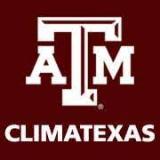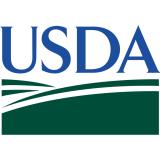Drought conditions expand over parts of Texas and western Kansas and Oklahoma.
Eastern Oklahoma and Kansas see drought conditions improve.
Key Points
- Severe drought (D2) has developed over parts of Texas.
- Following a late summer/early fall flash drought, nearly all of eastern Oklahoma has seen 4+ inches of rain in the past 30 days, leading to major improvements.
- Western Oklahoma and far southwestern Kansas are still experiencing short- and long-term deficits leading to sustained drought, with portions of northwest Oklahoma and the Oklahoma Panhandle in extreme (D3) drought.
- Climate outlooks suggest a warmer-than-normal winter is more likely than not for the entire region, with increased chances for a drier-than-normal winter across all of New Mexico and most of Texas and western Oklahoma.
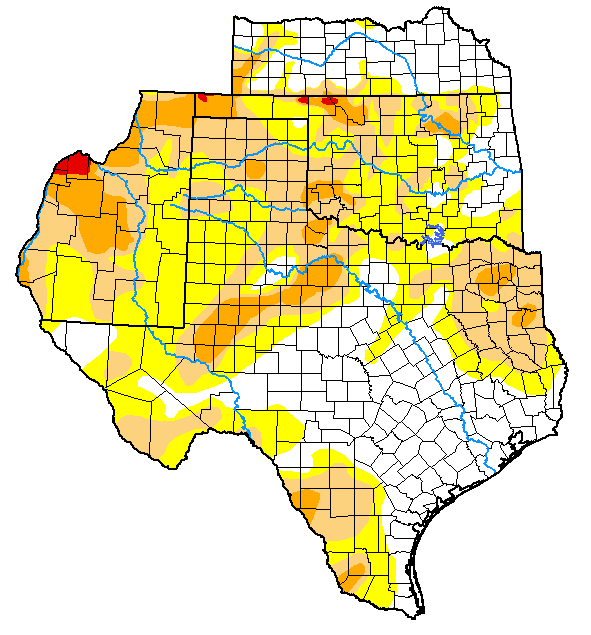
The U.S. Drought Monitor is updated each Thursday to show the location and intensity of drought across the country. Drought categories show experts’ assessments of conditions related to dryness and drought including observations of how much water is available in streams, lakes, and soils compared to usual for the same time of year.
This map shows drought conditions across Kansas, New Mexico, Oklahoma, and Texas as of November 2, 2021.
U.S. Drought Monitor Categories
The U.S. Drought Monitor is updated each Thursday to show the location and intensity of drought across the country. Drought categories show experts’ assessments of conditions related to dryness and drought including observations of how much water is available in streams, lakes, and soils compared to usual for the same time of year.
This map shows drought conditions across Kansas, New Mexico, Oklahoma, and Texas as of November 2, 2021.
U.S. Drought Monitor Conditions
As of November 2, 2021, 35% of the region is in drought, with parts of each state experiencing severe drought (D2) conditions.
Drought Development Over the Past Month
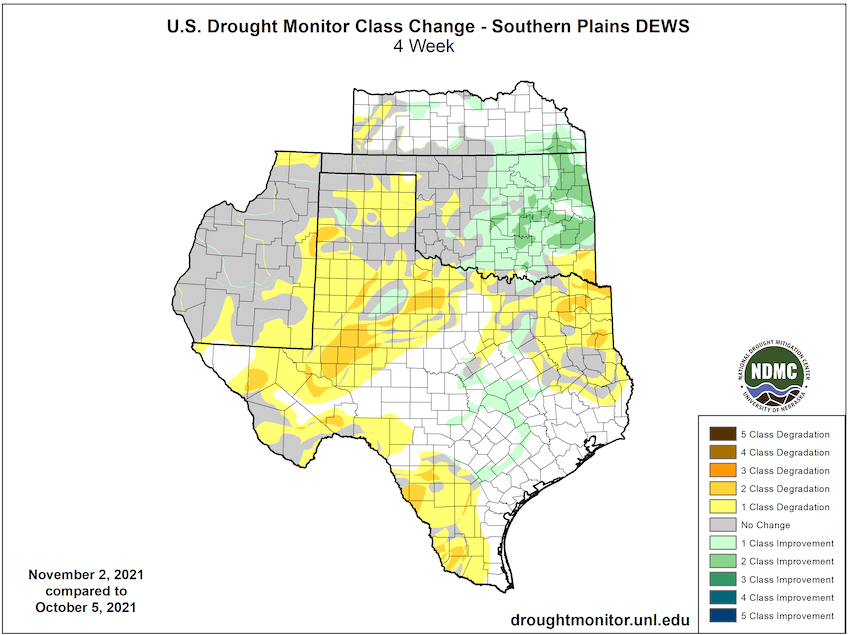
Higher Temperatures and Evaporative Demand
- Over the last 4 weeks, the average temperatures over western Kansas and the Oklahoma and Texas panhandles have been 3–4 ºF above normal for this time of year.
- This has caused evaporative demand to be higher than expected for this time of year, meaning any precipitation in these areas would evaporate from the landscape more quickly than usual.
30-Day Departure from Normal Temperature
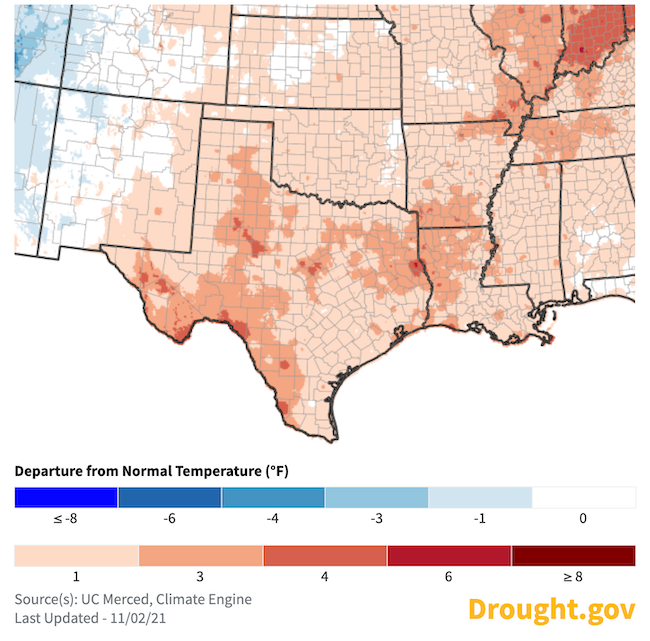
4-Week Evaporative Demand Drought Index (EDDI) for October 28, 2021
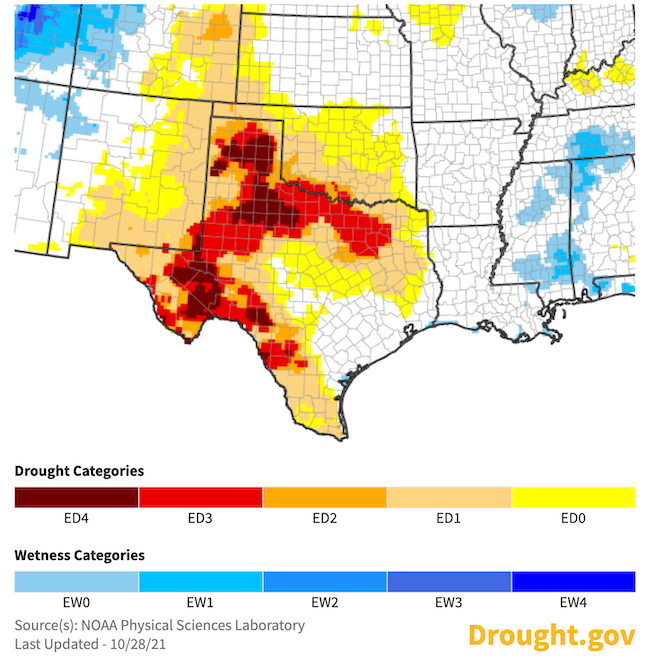
Low Precipitation
- Precipitation over the last 30 days has been only about 25% of average for western Texas, the Oklahoma panhandle, and far western Kansas.
- The 60-day percentage of average precipitation for the region shows precipitation less than 50% of the long-term average for western and northern Texas
30-Day Percent of Normal Precipitation
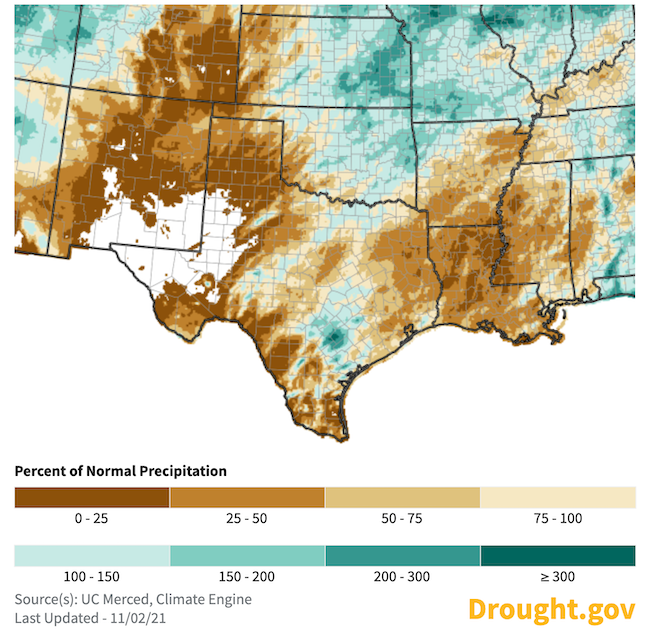
60-Day Percent of Normal Precipitation
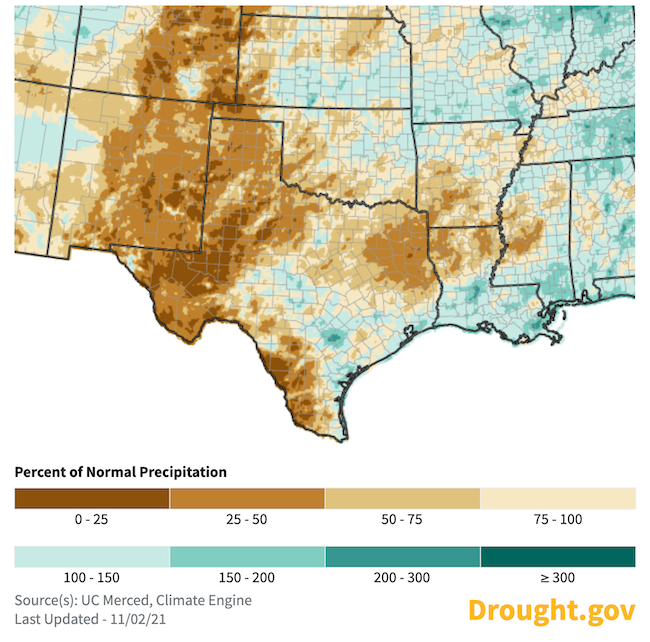
Drought, Precipitation, and Temperature Outlook
- Both the monthly and the seasonal drought outlooks show drought conditions persisting or developing over Kansas, Oklahoma, and northern Texas.
- Odds slightly favor below-normal precipitation for the Southern Plains for the remainder of the year.
U.S. Seasonal Drought Outlook: October 12, 2021–January 31, 2022

Three-Month Precipitation Outlook: November 2021–January 2022
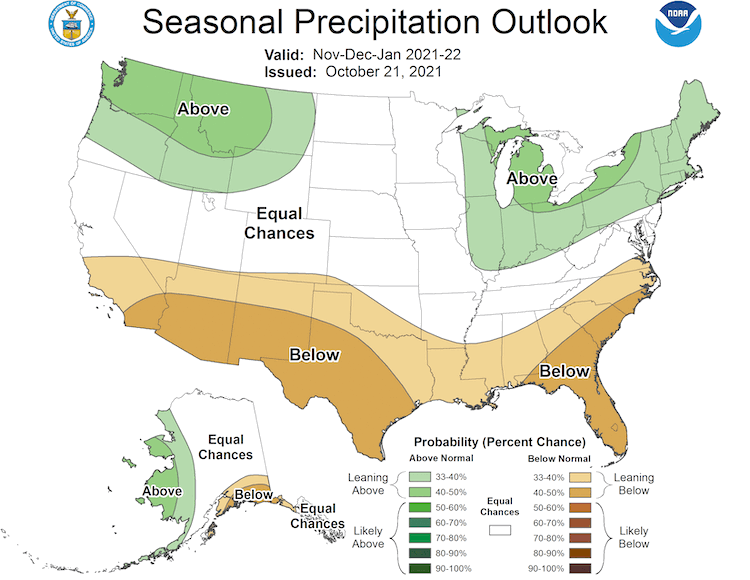
Three-Month Temperature Outlook: November 2021–January 2022
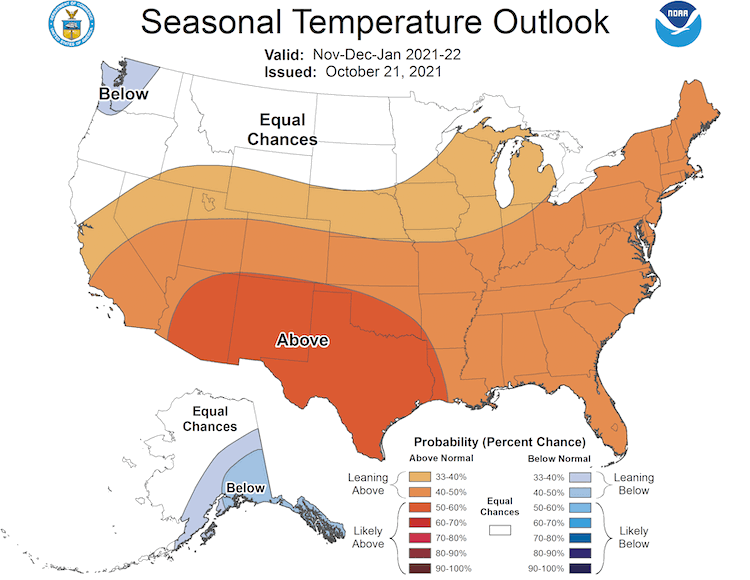
For More Information
NIDIS and its partners will issue future drought updates as conditions evolve.
More local information is available from the following resources:
Prepared By
Joel Lisonbee
NOAA/National Integrated Drought Information System (NIDIS)
Gary McManus
Oklahoma State Climatologist, Oklahoma Mesonet, Oklahoma Climatological Survey
Chip Redmond
Kansas State University
Cait Rottler
USDA Southern Plains Climate Hub
Clay Pope
CSP, LLC/USDA Southern Plains Climate Hub
John Nielsen-Gammon
Texas State Climatologist, Texas A&M University
Victor Murphy
National Weather Service Southern Region
This drought early warning update is issued in partnership between the National Oceanic and Atmospheric Administration (NOAA) and the offices of the state climatologist for Texas, Oklahoma, New Mexico, and Kansas. The purpose of the update is to communicate a potential area of concern for drought expansion and/or development within the Southern Plains based on recent conditions and the upcoming forecast. NIDIS and its partners will issue future drought updates as conditions evolve.







